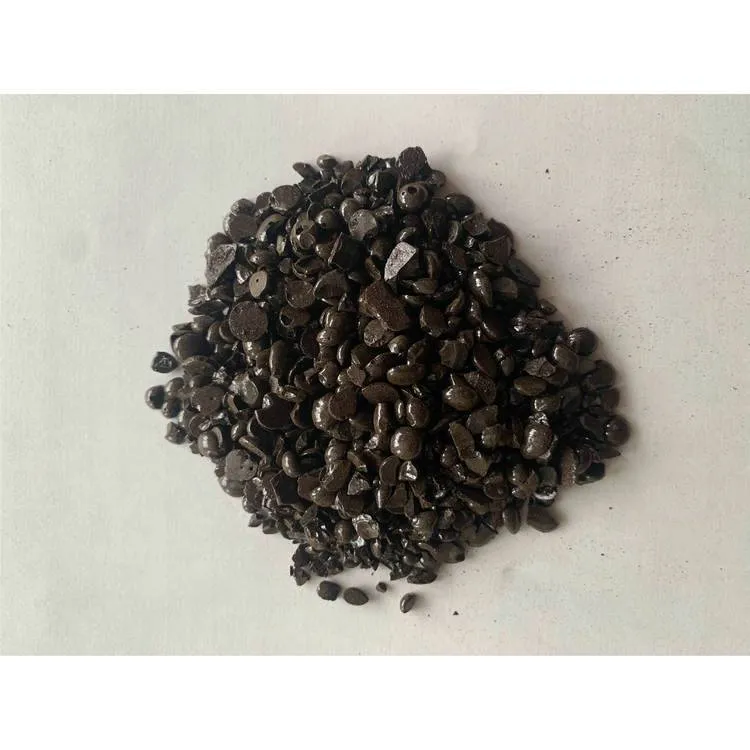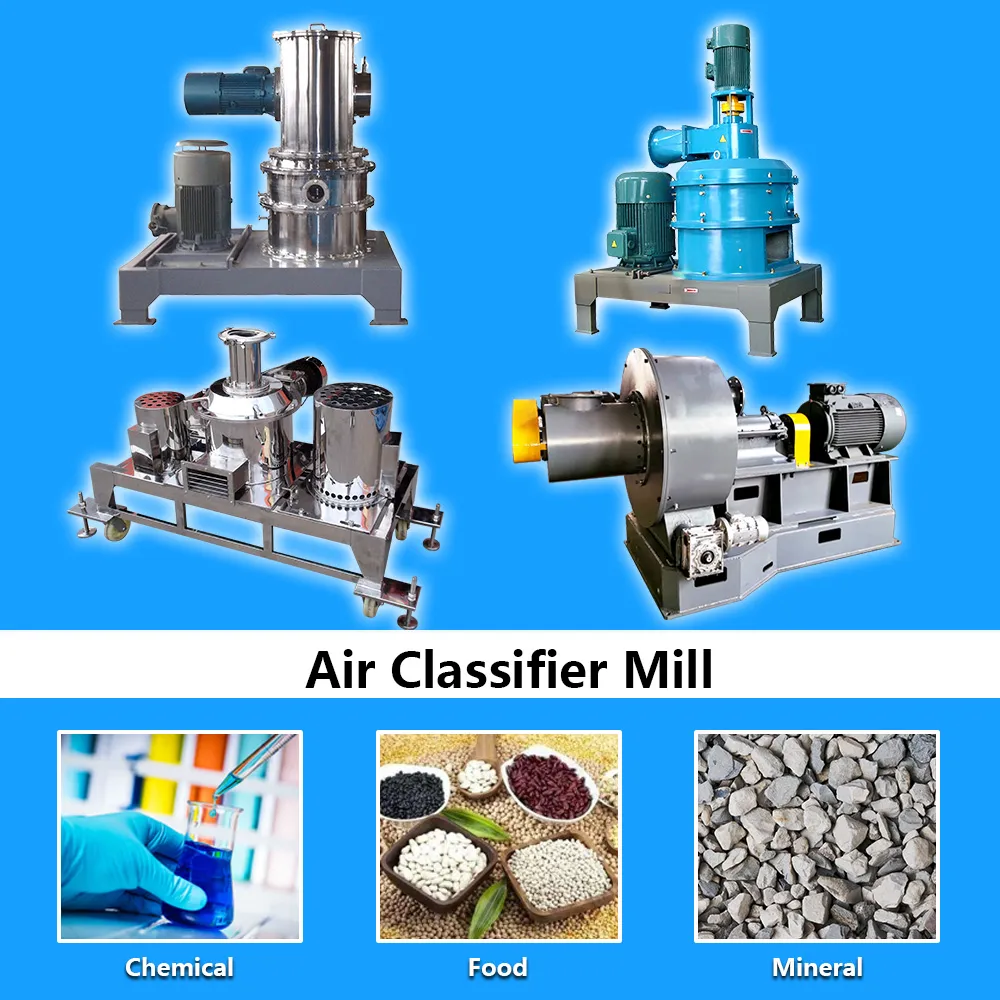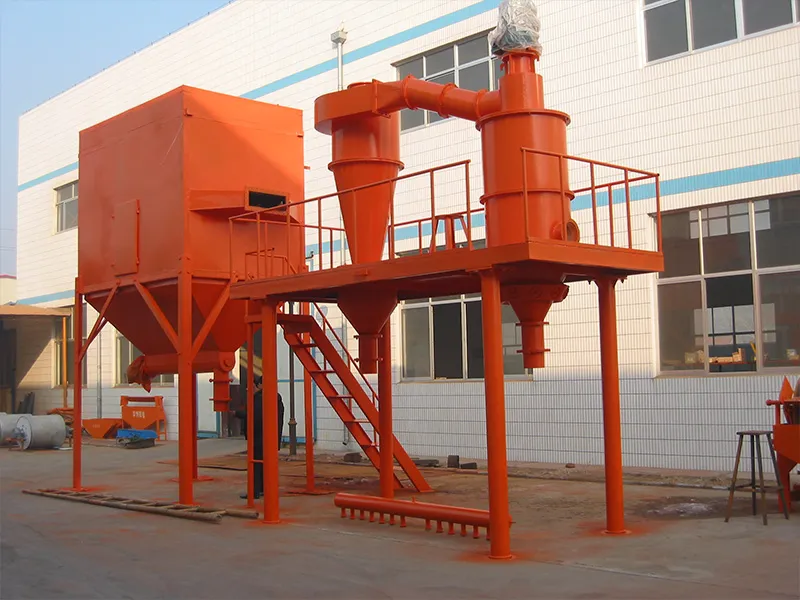Resin-derived carbon (typically referring to the hard carbon material obtained from the high-temperature carbonization of resin) plays a critical role in the production of negative electrode materials for new energy batteries. Using a professional ultra-fine classifying mill (generally an integrated system combining a mechanical mill and an air classifier), resin-derived carbon can be pulverized to a D50 < 10 μm, and can even reach a level of D50 = 3–5 μm. The finest particles can achieve 1–2 μm.

How an Ultra-Fine Classifying Mill Works
An ultra-fine classifying mill is typically not a single machine but a system. Its core components include:
• Mechanical Grinding Unit: Such as jet mills or mechanical impact mills, which break down particles through high-speed collision and shear forces.
• Classifier: This is the key to achieving “ultra-fine” and “precise” control. Usually a high-speed rotating turbo classifier, it separates coarse particles and returns them to the grinding zone for further milling. Only fine particles that meet the target fineness can pass through and be collected.
• Collection System: Including cyclone separators and baghouse dust collectors, used to collect the qualified product.
This process operates in a dynamic balance, allowing precise control of the final particle size distribution by adjusting various parameters.
Key Factors Influencing the Final Fineness

Although the equipment is highly capable, the achievable fineness depends on the following:
1. Raw Material Characteristics:
◦ Hardness and Brittleness: The hardness of resin-derived carbon is closely related to its carbonization temperature. Higher carbonization temperatures result in a higher degree of graphitization, making the material harder and more brittle, which facilitates finer grinding. Conversely, resin-derived carbon carbonized at lower temperatures may be softer and more ductile, making it more difficult to grind.
◦ Initial Particle Size: Smaller feed particle sizes make it easier to obtain a finer final product. Pre-processing through coarse or intermediate crushing is usually required.
2. Equipment Parameters and Type:
◦ Classifier Speed: This is the most critical control parameter. Higher rotational speeds generate greater centrifugal force, allowing only finer particles to pass through, resulting in a finer product.
◦ Airflow Velocity and Pressure (for Jet Mills): Affect collision energy and transportation efficiency.
◦ Feed Rate: The feed rate must be stable and matched to the grinding capacity. Excessive feed rates reduce particle residence time in the grinding chamber, leading to insufficient grinding and a coarser product.
◦ Equipment Type and Design: Different manufacturers and models vary in their ultimate grinding capabilities. High-end equipment offers superior materials, sealing, and flow field design, enabling finer and narrower particle size distributions.
3. Process Objectives:
◦ Finer is not always better. For battery anode materials, a reasonable particle size distribution is essential. Typically, D50 (median particle size) and D97 (the size at which 97% of particles are smaller) are the focus.
◦ Excessively fine powder can lead to an overly large specific surface area, reduced initial charge-discharge efficiency (Coulombic efficiency), increased side reactions, and decreased compaction density. Therefore, the process aims to identify an optimal range.
Typical Particle Size Requirements for Resin-Derived Carbon in Battery Applications
For lithium-ion battery anode materials, the ideal particle size range for resin-derived carbon is usually:
• D50: 5–15 μm
• D100: ≤ 20–25 μm (It is very important to control the maximum particle size below 20 μm to prevent piercing the battery separator.)
Professional ultra-fine classifying mill systems can easily and stably control resin-derived carbon powder within this range and allow precise adjustments based on formulation requirements.
• Theoretical Limit: High-quality lab-scale or production-grade ultra-fine classifying mill systems can grind resin-derived carbon to an extremely fine level of D50 = 1–3 μm.
• Industrial Reality: In large-scale production, considering overall battery performance (efficiency, density, safety), the particle size of resin-derived carbon is typically controlled within the range of D50 = 5–15 μm. This is a level that ultra-fine classifying mills can easily and consistently achieve.
About Epic Powder Machinery
Epic Powder Machinery is a leading provider of advanced powder processing solutions, specializing in the design and manufacturing of high-precision grinding and classifying systems. Their ultra-fine classifying mills are widely used in the new energy sector, including the processing of anode materials like resin-derived carbon.
With a focus on innovation and reliability, Epic Powder Machinery offers equipment that ensures narrow particle size distribution, high efficiency, and stable performance—helping manufacturers meet stringent quality requirements in battery material production. Their systems are engineered to deliver precise control over fineness, making them an ideal choice for applications demanding ultra-fine grinding and accurate classification.

